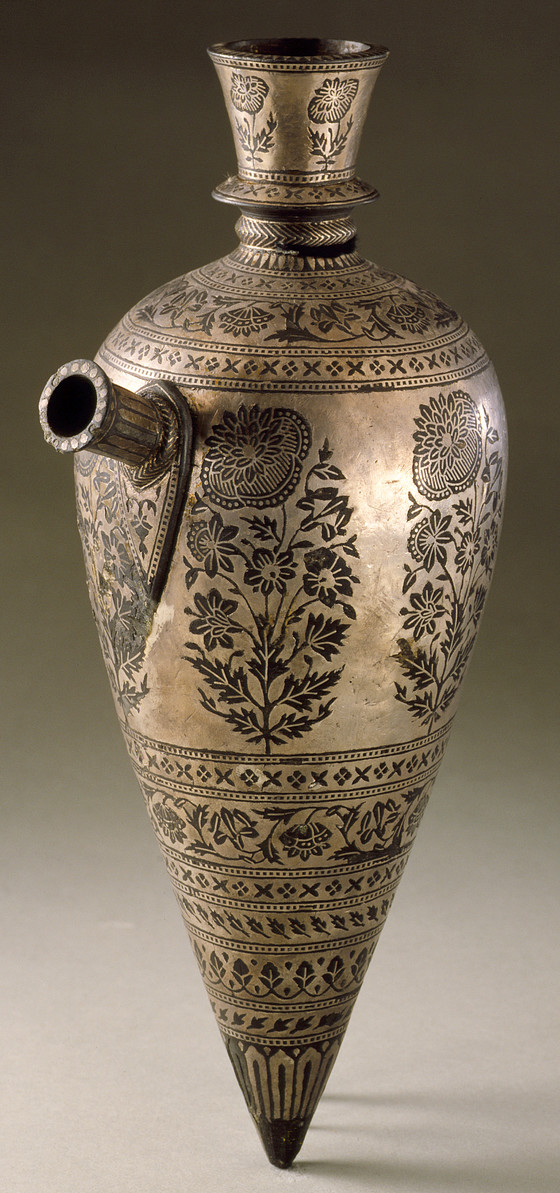Hookah Base

Please log in to add this item to your gallery.
View comments
No comments have been posted yet.
Add a comment
Please log in to add comments.
Please log in to add tags.
* Nearly 20,000 images of artworks the museum believes to be in the public domain are available to download on this site.
Other images may be protected by copyright and other intellectual property rights.
By using any of these images you agree to LACMA's Terms of Use.
Hookah Base
India, Telangana, Hyderabad or Karnataka, Bidar, early 19th century
Tools and Equipment; hookahs
Bidri ware (aftabi and tehnishan techniques)
10 1/2 x 4 1/2 in. (26.67 x 11.43 cm)
Indian Art Special Purpose Fund (M.81.181)
Not currently on public view


